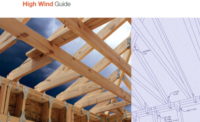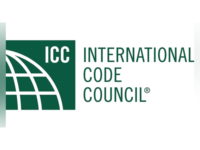New construction
guidelines developed by the International Code Council will increase public
safety in hurricane prone areas and other high-wind regions. The Standard for
Residential Construction in High Wind Regions (ICC-600) provides wind-resistant
design and construction details for residential buildings. The standard applies
to areas where wind speeds reach 100-150 miles per hour, including the hurricane
prone regions of the east and gulf coasts, coastal Alaska, and the special wind region of the Columbia River
Gorge in Washington and Oregon.
“Communities that adopt
this new standard will have a tool based on sound science to help them save
lives and protect property,” said Code Council CEO Rick Weiland. “It’s necessary
if we are to reduce the billions of dollars in wind-related damage this country
faces year after year.”
ICC-600, approved by
the American National Standards Institute (ANSI) as an American National
Standard, uses the latest engineering knowledge to improve the structural
integrity and performance of homes. The standard is an update to SSTD 10-99 and
includes new provisions such as prescriptive designs for wind speeds up to 150
mph with three-second gusts, designs for cold-formed steel framing and exterior
wall coverings for high wind.
“The High Wind Standard
will help First Preventers protect the communities they serve,” said Code
Council CEO Rick Weiland. “First Preventers, those many unheralded and mostly
unknown code officials who check and double-check code compliance and administer
building safety codes, play a major role in saving lives, protecting property
and reducing recovery costs often paid for by taxpayer
dollars.”
The Standard for
Residential Construction in High Wind Regions, available in September for
communities to adopt, will be considered as a referenced standard in the 2009
International Residential Code.
The International Code
Council, a membership association dedicated to building safety and fire
prevention, develops the codes used to construct residential and commercial
buildings, including homes and schools. Most U.S. cities,
counties and states choose the International Codes, building safety codes
developed by the International Code Council.
ICC New Standard for Hurricane, High Wind Areas
Looking for a reprint of this article?
From high-res PDFs to custom plaques, order your copy today!





